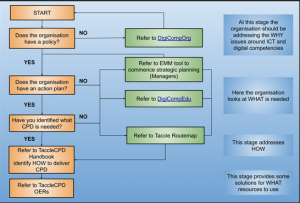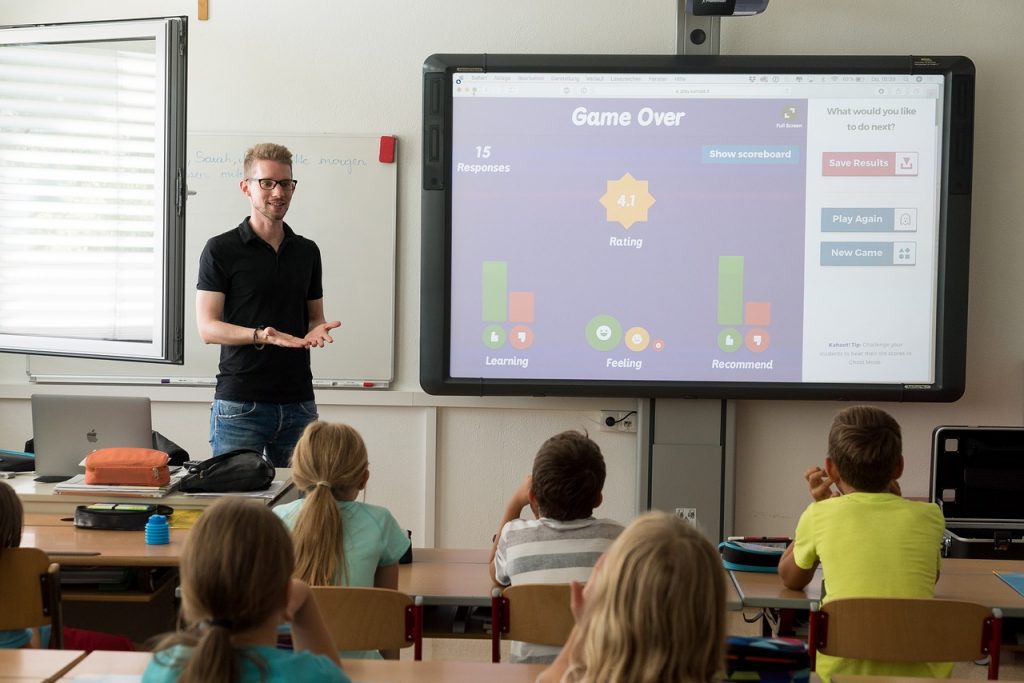This week our institute – Institut Technik & Bildung (ITB) of the University of Bremen – has hosted a study visit of a prominent delegation from Namibia. This study visit is part of a cooperation process that has been started with smaller steps and now there is an ongoing discussion, how to deepen the cooperation. As I have not been involved in these discussions I leave it to my colleagues and to the Namibian authorities to find the bast ways forward.
As a part of their program the delegation visited on Tuesday two interesting organisations in the nearby region. With the training centre Bau-ABC I had had active cooperation for many years in the EU-funded Learning Layers project. But in the follow-up phase I had only had a chance to make some occasional visits. As a contrast, I had not visited the vocational school BBS Wildeshausen before. Instead, I had had several conversations with one of the teachers who is also working in several projects of our institute. By joining the study visit group on Tuesday I had a chance to catch up with newer developments in Bau-ABC and to get live impressions from BBS Wildeshausen (of which I knew only via our talks in Bremen). Below, I will give a brief account of the visits in both places. In my next post I will outline some conclusions for my work in the ongoing EU-funded project TACCLE4-CPD.
Visiting the training centre Bau-ABC Rostrup
At the training centre Bau-ABC Rostrup the delegation was interested in finding out, how such an intermediate (industry-supported) training centre has been embedded into the dual system of vocational education and training (VET). Here, the representatives of host organisation were able to give a picture of the mutual agreement of the Social Partners (employers’ confederations and trade unions) that such an intermediate learning venue was necessary in the construction sector. Likewise, they could explain funding arrangements and the organisational setting via which the industry and the craft trade companies were supporting the training centre. In addition, the visitors got a picture of the role of the training centre at different phases of apprentice training. Finally, the visitors got insights into the continuing vocational training (CVT) that provide a vocational progression route to managerial qualifications in the construction sector.
During our round tour at the workshops and outdoor training areas we could see, how the pedagogic ideas were put into practice. We got impressions of apprentice training via holistic occupational work processes, of learners’ rotation from major learning areas to supporting areas and of the patterns of self-organised learning. In particular we had a chance to see, how a digital toolset (the Learning Toolbox) was used in delivering instructions and collecting apprentices’ project reports. Here we could see that results of the EU-funded Learning Layers project were actually used to support training.
Visiting the vocational school BBS Wildeshausen
The second part of the visit was somewhat different, because only some teachers of the BBS Wildeshausen were present (the school holiday period had already started). Yet, we had a good possibility visit the integrated vocational learning facilities of different occupations. In Wildeshausen the school architecture had abolished the separation of classrooms, workshops and laboratories and instead provided integrated spaces. This was already a great support for integrating theoretical and practical learning. Yet, the major innovations that were presented to us were in the pedagogic sphere.
When describing the learners’ projects the teachers drew attention to the role of real occupational tasks and to controlling the quality by the learners themselves. Moreover, some projects engaged the learners in constructing devices that were needed in their training or in manufacturing products that could be used in the training. In the agricultural and automotive workshops we saw vehicles that had been constructed by nearby industries to make the functioning of the machinery more transparent (and to give easier access for diagnostic measures and repair work.
—
I guess this is enough of the observations during the field visit. The visitors from Namibia were very impressed and inspired. Since they were in a process to start new cooperation activities, the visit gave a lot of food for thought. As for me, I had joined them to make appointments with Bau-ABC trainers and teachers in BBS-Wildeshausen to discuss the next phase of my work in the TACCLE4-CPD project. And in this respect this was a very productive and helpful field visit. I will discuss my ideas and interim conclusions in my next post.
More blogs to come …
 Do you read books and papers on screen or do you prefer paper. I am conflicted. I used to have an old Kindle but gave it up because I am no fan of Amazon. And I used to read books on firstly an ipad and latterly an Tesco Huddle tablet – both now sadly deceased.
Do you read books and papers on screen or do you prefer paper. I am conflicted. I used to have an old Kindle but gave it up because I am no fan of Amazon. And I used to read books on firstly an ipad and latterly an Tesco Huddle tablet – both now sadly deceased.





